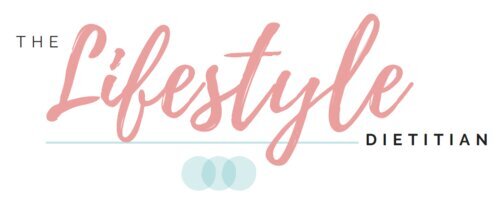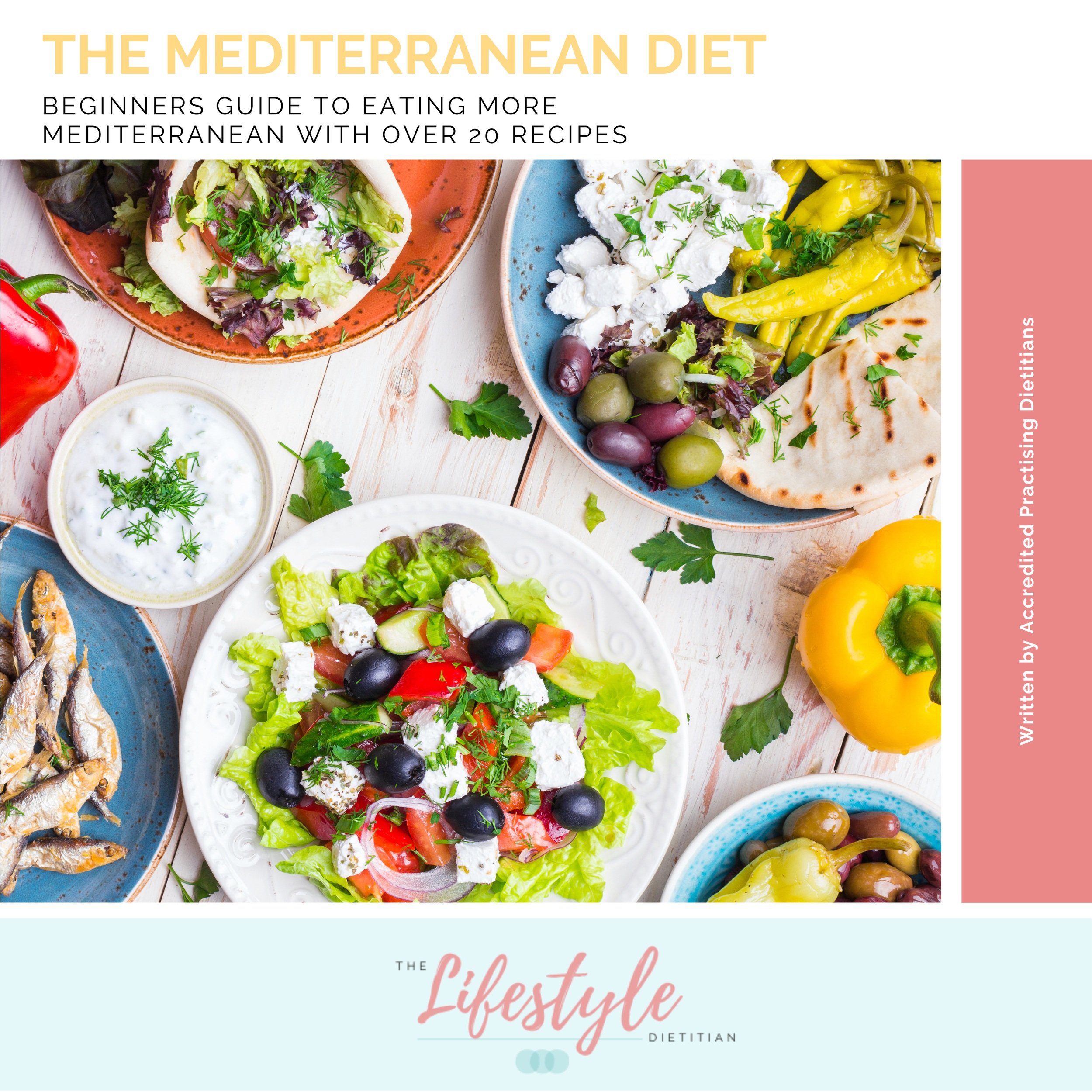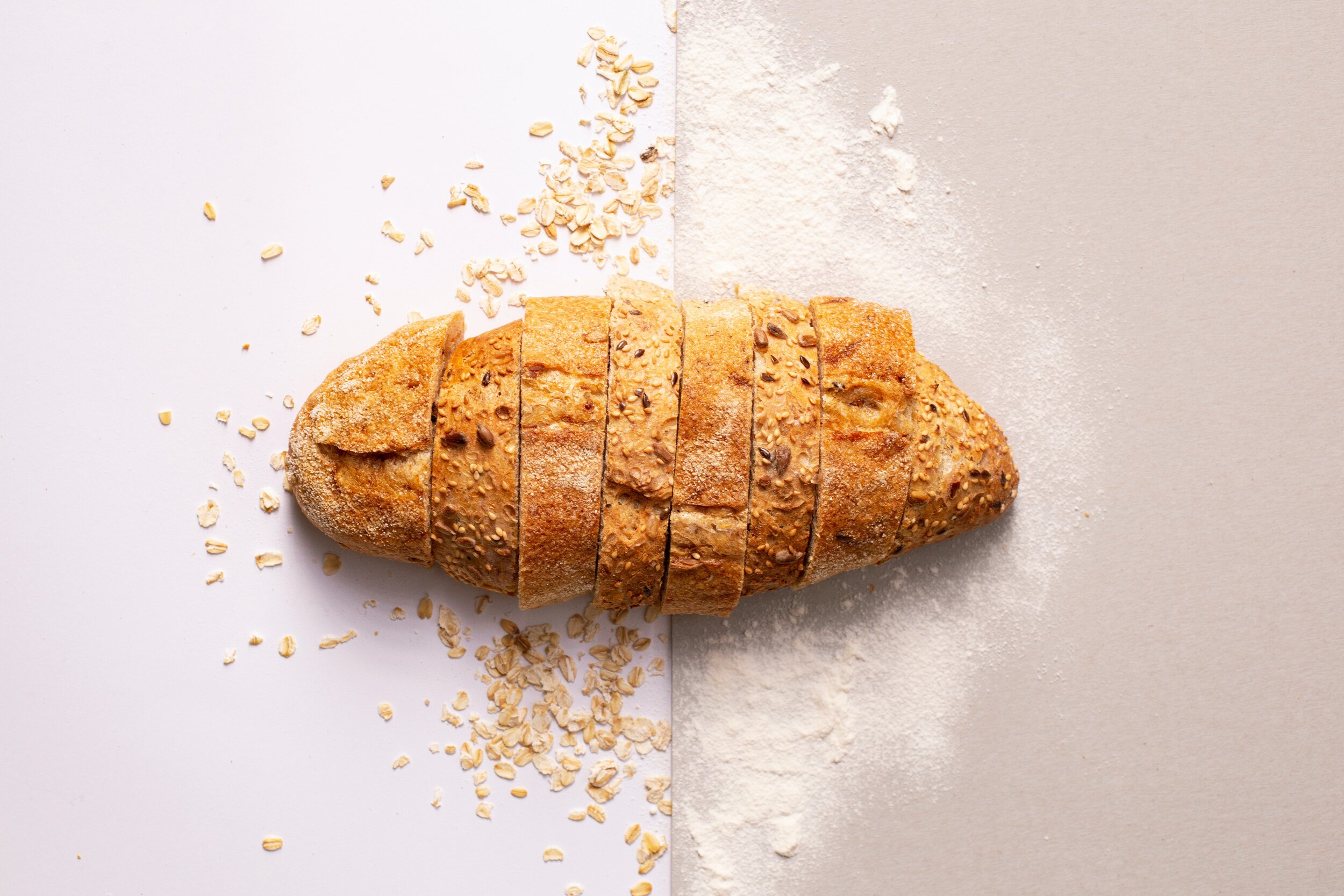To bread or not to bread?
Over the years, bread has unfairly gotten a bad rap. It’s often the first food people cut out when embarking on a healthier lifestyle. However, this can often be unnecessary and not lead to the desired benefit of improved health.
In saying that, the bread aisle at the supermarket can be overwhelming and confusing. White, wholemeal, multigrain, wholegrain, high fibre, high protein, low carb, gluten free, low FODMAP… the list goes on. To ‘wrap’ up the end of Whole Grain Week, we decided to break down the different bread varieties to help you make the best choice for you.
White Bread
White bread is made only from the starchy endosperm of the wheat grain (see our previous post on what makes a healthy grain. This is listed as “wheat flour” in the ingredients list. Without the bran and germ included, we miss out on all the fibre, B vitamins, vitamin E, antioxidants and phytochemicals these layers offer. Some brands commercially add fibre and nutrients back in which is a better choice for fussy eaters. White bread has a high Glycaemic Index, meaning it digests very quickly, spikes our blood sugar, gives a short-lived energy burst and leaves us feeling hungry soon after.
Wholemeal Bread
One step up from white, wholemeal bread is made from all parts of the grain (bran, germ and endosperm) ground into a fine flour listed as “wholemeal wheat flour” in the ingredients. Sometimes it is mixed with processed “white” wheat flour. Wholemeal bread has more fibre, vitamins and minerals than white bread but still has a relatively high Glycaemic Index due to processing the grain into a finely milled flour.
Multigrain Bread
Multigrain bread is made from white flour (again listed as “wheat flour”) with some grains and seeds added. Added grains and seeds means it has slightly more fibre and nutrients than white bread and a medium Glycaemic Index. The downside? It is still largely white flour and also mistakenly confused with whole grain bread, which has a much more impressive nutrient profile!
Whole Grain Bread
The cream of the crop, whole grain bread is made with “wholemeal flour” (i.e. the bran, germ and endosperm) with added grains and seeds. It has the most fibre, vitamins, minerals, healthy fats and the lowest Glycaemic Index. It is the most nutritious choice that keeps our blood sugar and energy levels stable and our hunger in check. Consuming more whole grain products is linked with having a healthier weight and a lower risk of diseases like bowel cancer. In fact, compared to those who eat white processed grain products, people who eat whole grain products like whole grain bread have a much higher diversity of healthy gut microbes and an increased metabolism. This may explain the link between whole grains and better health and waist lines!
HUNGRY FOR MORE? CHECK OUT ROUND TWO OF OUR BREAD BREAKDOWN
The Bottom Line
For most of us, there is no need to skip the bread. Instead, choose to upgrade to a whole grain choice. Look for both “wholemeal flour” and “whole grains” in the ingredients list. For all breads in general, go for at least 5g of fibre in the per 100g column of the nutrition panel and opt for the highest between different brands.
Our Top Picks
Whole Grain Bread
Helga’s Wholemeal Grain
Burgen Wholemeal and Seeds
Wholemeal Bread
Abbott’s Village Bakery Farmhouse Wholemeal
Lawson’s Traditional Bread Stone Mill Wholemeal
Multigrain Bread
Burgen Whole Grain and Oats
Tip Top 9 Grain Original
White Bread
Wonder White High Fibre
Tip Top The One
\
Still confused about the amount and type of bread that is right for you? Book in with one of our Dietitians for a more personalised approach.
ENJOYED THIS? YOU WILL LOVE THIS…
THE MEDITERRANEAN DIET EBOOK: BEGINNER'S GUIDE TO EATING MORE MEDITERRANEAN
Our latest Mediterranean Diet ebook is your one-stop beginner’s guide to eating more Mediterranean. It will leave you confident in taking the principles of the Med Diet and whisking, stirring, simmering them into meals that truly taste delicious.
We gently folded in over 20 Dietitian-curated drool-worthy recipes, covering breakfast, lunch, dinner, dressings and snacks. Then, added a practical snack product guide before garnishing with everyday eating tips and a weekly challenge list to tick off.
Like a cookbook but with a twist. Because each recipe, tip and suggestion is Dietitian-approved and tested.















